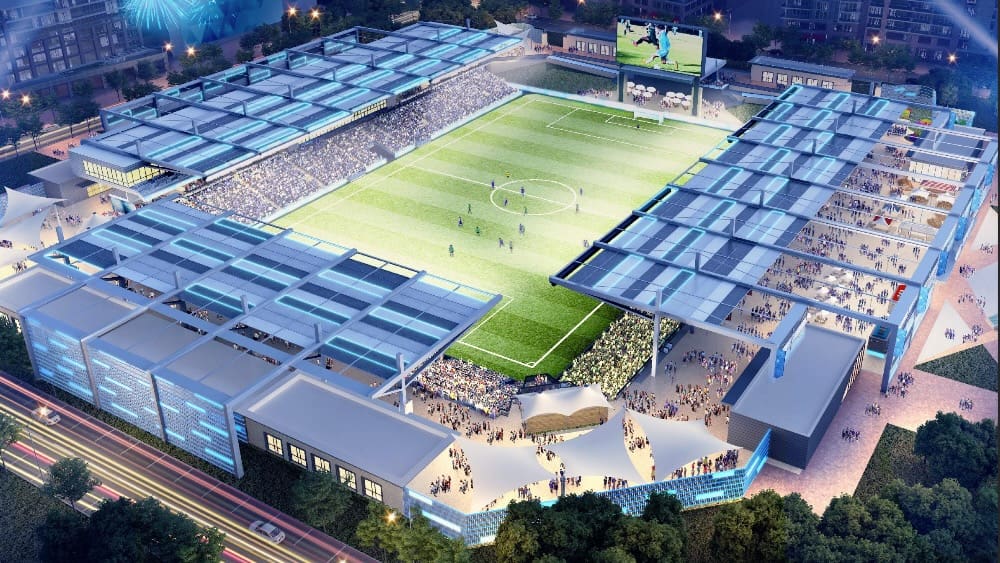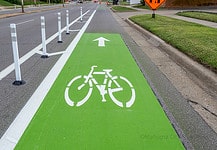Last Updated on January 28, 2024, 8:10 AM | Published: January 28, 2024
OKLAHOMA CITY — The long-planned Downtown stadium – part of 2019’s MAPS 4 package – has recently seen its budget nearly doubled, its proposed size significantly increased, and its expected location shifted, all in the name of achieving what the project’s proponents say it needed all along.
When the stadium was first approved in 2019, the MAPS 4 budget allocated $41 million for its construction without any clear allocation for site selection or land acquisition, elements of the project that would fall to the owners of the OKC Energy soccer team, the stadium’s intended primary residents.
But the skyrocketing costs of building materials and real estate, complications with an originally eyed site, and what’s seen as a can’t-miss opportunity to inject investment into a dormant part of the city have all sent officials and organizers back to city council in search of a major funding bump.
Not to mention that organizers would like to see the stadium’s projected seating capacity increased from 8,000 to 10,000.
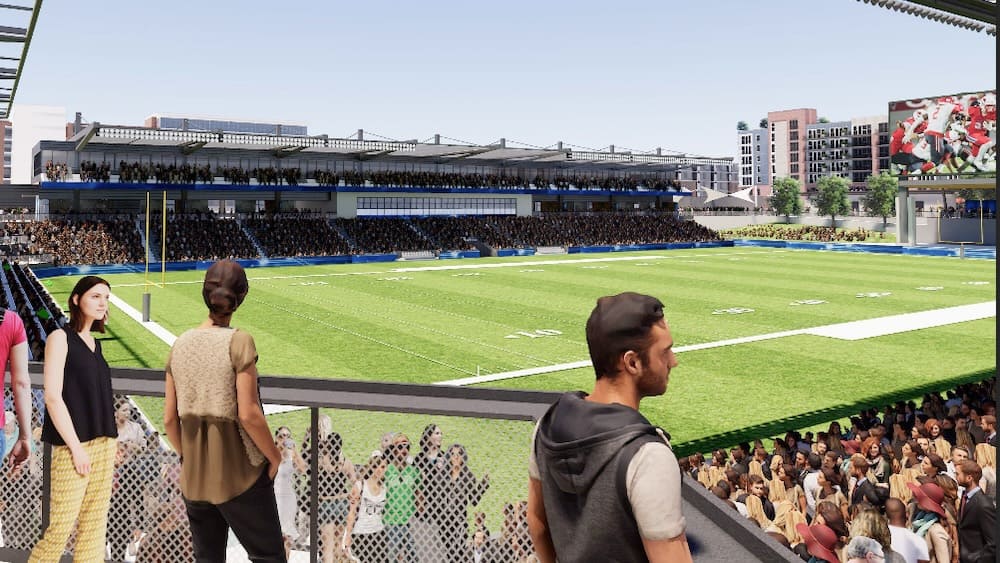
That increase was approved this month, expanding the stadium’s funding from $41 million to $71 million and locking the Energy into an agreement to secure and donate the required land in the mostly empty, largely ignored former Producers Cooperative Oil Mill land to the southeast of Downtown.
Rather than creating new taxes or incurring any new debts for the city, however, that added $30 million is set to come from existing tax revenue balances that economic leaders say are “extra money” for the city, mainly generated from the complex Tax Increment Financing (or TIF) system.
“With adoption of this plan by the Council, we have a more appropriate budget for the stadium, we can secure the donation of land, and we will provide the spark this particular property needs,” said Mayor David Holt in a press statement after city council approved the funding increase. “That we can do all of this without general fund tax dollars is a win-win.”
Why a new stadium?
The short answer is that the OKC Energy needs a larger field and the city wants a useable venue for bigger sports and entertainment opportunities.
The Energy have called the historic Taft Stadium at NW 23rd and May home since 2015, following near-total renovations and upgrades, but the field dimensions have always come in smaller than is required by the USL – the United Soccer League, in which the Energy compete.
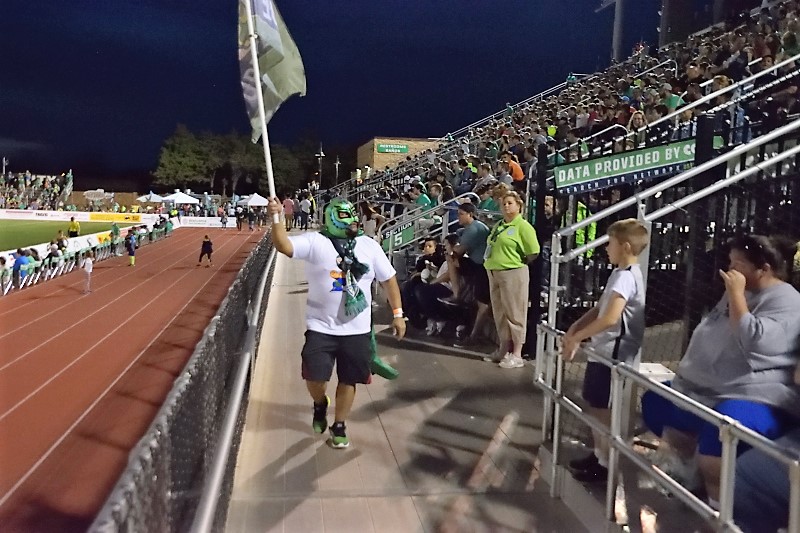
In past years, the Energy were granted an annual waiver to use the smaller field at Taft, but beginning in 2023 (following a canceled 2022 season for improvements and renovations at Taft Stadium) the USL informed all teams that no further waivers would be granted for field size.
This announcement was aimed squarely at the Energy, as OKC is currently the only “Top 50” city without a stadium that meets the 110 x 70 yard size requirement for a regulation field.
With the new, regulation-sized stadium approved back in 2019 as part of MAPS 4, the Energy had intended to continue using Taft until the new venue’s expected completion in time for the 2026 season.
Following the USL’s new stricter requirements, Energy ownership made requests to increase the field size at Taft, a job that would require removing lanes from the stadium’s track. Taft’s owner, Oklahoma City Public Schools, declined those plans.
With no other viable venues available, the team has announced an ongoing hiatus until the new stadium is completed, though they have said that they remain a member of the USL and that the team will resume play and operations once the new stadium is ready.
In addition to the Energy’s residence, a new stadium could see use by high school and college football and soccer, as well as large-scale concerts and events.
Where Downtown?
The MAPS 4 resolution called for a new stadium with “the transformational power demonstrated by previous MAPS projects like the ballpark and the arena,” so the project’s proposed location Downtown is no surprise.
Finding a suitable site has been a more complicated process than expected, however.
As far back as 2017, Energy owner Bob Funk Jr. entered into negotiations to purchase nearly 40 acres of land that was previously home to the (now demolished) Producers Cooperative Oil Mill facility. Funk’s intentions even then were for the site to be the eventual home of a new stadium as well as a new sports-and-entertainment-focused business and recreation district.
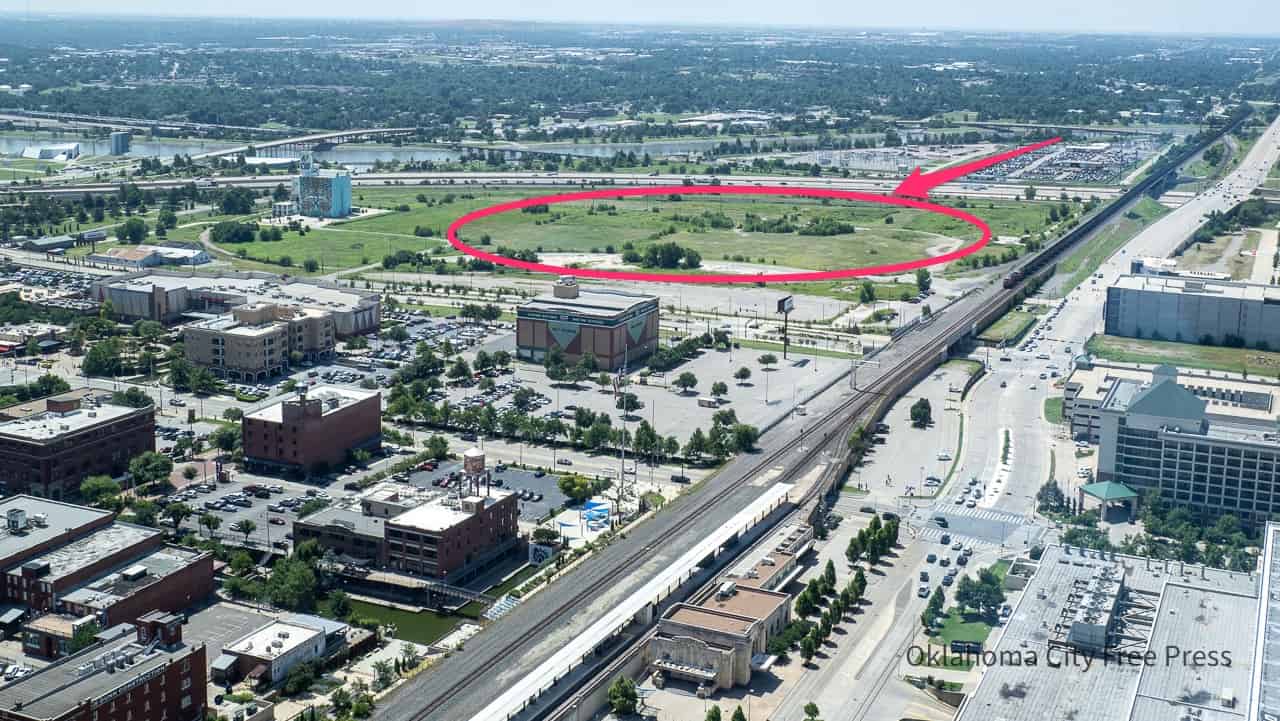
Negotiations at the time fell through long before 2019’s MAPS 4 approval, due mainly to the cost of the sprawling 40-acre land.
Following the MAPS 4 passage, Funk and investors began eyeing the much-hyped Strawberry Fields development to the west of Scissortail Park as a possible home for the stadium.
With that development stuck in potentially permanent limbo and the project’s head, Pat Salame, now under securities investigation as reported by The Oklahoman, that location was taken off the table as well.
Then came COVID, supply chain setbacks, inflation, and years of uncertainty regarding both the future of the Producers Co-op land and the viability of building a new stadium with $41 million, a budget now seen as paltry in a post-pandemic economic landscape.
With the city struggling to spark development in the now long-empty Producers Co-op space, and with stadium investors concerned about rising costs, officials began exploring ways to both reevaluate the project’s funding and to kick-start development in the area with a plan utilizing Tax Increment Financing.
What is Tax Increment Financing?
Notoriously one of the most complex funding models and most labyrinthine elements of city governance, the Tax Increment Financing – or TIF – model is a way of using the increasing property values of quickly developing, hyper-localized city areas to help pay for the development itself.
When a city area is primed for development, analysts can determine its current property tax rate and then, with the approval of a new TIF district, allocate any revenue generated above that amount from increasing property tax rates in the area for infrastructure or city projects.
TIF_Districts_01042022_ColDowntown OKC alone currently has six individual TIF districts, with a newly-approved TIF district comprising areas to the southeast of Downtown where the stadium is likely to be constructed.
The Downtown/MAPS Tax Increment District (often called simply the Downtown TIF) was created in 2000 to aid and fund projects in the very first MAPS, and it’s set to expire and close in 2026 with an expected positive balance of $20 million.
“Over time, enough has happened downtown, that there’s just been extra money generated and the city hasn’t had to spend all of that on the individual projects,” explained Alliance for Economic Development president Kenton Tsoodle.
How can that money be used?
As former assistant city manager, Tsoodle was heavily involved in the organization and passage of MAPS 4. In his current position with The Alliance for Economic Development, he’s been instrumental in devising the stadium project’s new funding increase using TIF revenue.
With city approval, that “extra money” generated in the Downtown TIF can now be used to cover some of the increased cost of the stadium, with the remainder covered by funds originally allocated for debt coverage from the Omni Hotel project.
The Omni Hotel’s funding is a public/private partnership, with city debts leveraged by a large collection of sources, including multiple TIFs and hotel taxes. With the Omni’s earnings reportedly above projection, city officials approved the use of funds originally allocated for debt coverage to be shifted to the stadium.
The plan is to approve the use of those funds generated by the Downtown TIF and the Omni Hotel to increase the stadium budget dependent upon Energy owners going back to the Producers Co-op land and settling on a site in that space that they will purchase and then donate to the city.
Energy ownership has signed a contract declaring they’ll do just that.
The new deal calls for the Energy to buy just nine acres – no longer the nearly 40 acres of the previously unsuccessful deal – and to donate 7.2 acres to the city for the stadium site. The remaining land will be developed by the Energy toward their goal of a larger “sports-centered entertainment district.”
The Energy will retain an option to purchase the remaining land as the area develops over time.
Why was approval needed?
Reallocating funds generated by one TIF for use in another required approval by both the OKC Economic Development Trust and the City Council for the City of Oklahoma City.
Even though the expected stadium site falls into the “project area” of the Downtown TIF that generated the $20 million to be used, redirecting that balance toward a new project in a different part of the city from where it was generated did raise some questions.
“That is one nuance, because some of the questions we got on this were ‘what else can we spend the money on?'” said Tsoodle. “This 20 million could be spent on other public projects in that area, it could be used to incentivize other development projects. There are several different uses like that, that could be done. But this was the recommendation that the city council approved to use it on.”
Was $41 million ever enough?
Mayor Holt and stadium investors, including Energy leadership, have made repeated reference to the original $41 million approval having always been less than what was needed for a project of this size.
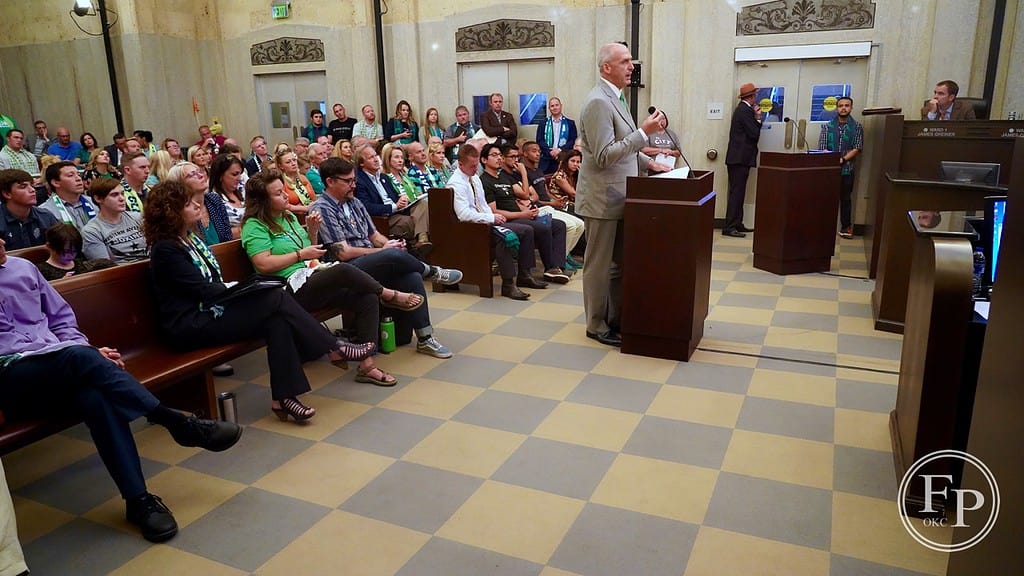
“The MAPS 4 stadium project was always funded below the level this city deserves,” Holt said in his press statement.
Was the plan, then, always to win approval for $41 million worth of funding through MAPS and then to return to the table later to find the necessary remaining funds?
Tsoodle says no.
“I don’t think there was necessarily a concerted plan to kind of come ask for more money later,” he told Free Press. “My view is just that when you’re putting a huge package together like MAPS, there’s always more want and more need than is available. As we’ve gone along over time, there’s continued to be a conversation about what this stadium looks like and where it’s going to be.”
With the finer details of those questions still up in the air, including where the agreed-upon final location will be and what the final approved plans and design might look like, It remains to be seen if the project will still meet its 2026 goal, and if the now $71 million budget will get team owners and city officials the stadium they’ve wanted.
Brett Fieldcamp has been covering arts, entertainment, news, housing, and culture in Oklahoma for nearly 15 years, writing for several local and state publications. He’s also a musician and songwriter and holds a certification as Specialist of Spirits from The Society of Wine Educators.
